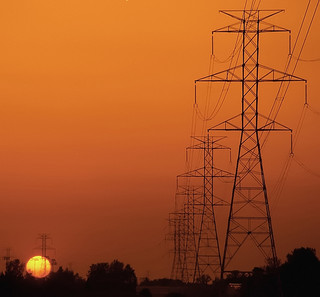Ausgrid network to talk back to operators

Ausgrid is rolling out upgrades to the electricity grid in Port Stephens, with technology that will allow the network infrastructure to "talk" to operators on what might be wrong.

(Cincinnati Mason Community "Power Nature & Man-Made" image by David Ohmer, CC BY 2.0)
The technology will be installed into the part of the Port Stephens grid that supplies Nelson Bay and Shoal Bay, where power lines can stretch up to 41km in length. At the moment, Ausgrid crews have to patrol these lines during blackouts or interruptions to determine the cause of the issue.
"On average, customers in the area experience 2.25 outages each year that last for 127 minutes," Ausgrid chief technology officer Adrian Clark said.
"We're testing to see if this new technology can cut blackout times and the number of customers affected."
If the new equipment installed on the network is successful, it will allow Ausgrid's control centre to remotely isolate faults, while redirecting power from other parts of the network to minimise the effects of an interruption. In addition, the information from the new equipment will allow Ausgrid to pinpoint faults, and automatically present operators with alternative ways to restore power, resulting in a network that has the ability to self-heal.
Ausgrid will be installing 10 smart reclosers, which temporarily isolate parts of the network when transient faults — such as lightning strikes — occur, and can also more permanently "lock out" parts of the network if the fault is detected as being persistent. In the past, Ausgrid crews had to physically visit reclosers to verify that they were in a lock-out state. The new technology will automatically report their statuses back to the control centre.
The smart reclosers will work with 14 new load-break switches that reconfigure the network to get power back to parts not affected by a fault.
An additional 67 sensors will be installed in street-side substations to monitor power at the street level. This will be important for diagnosing the quality of power being delivered to customers.
"The voltage or force ... supplied to homes can vary along a power line, which can impact homes a long way from a substation," Clark said.
"With more sensitive digital appliances in homes, it's important we look at new ways of managing voltage levels for every home and business."
To further verify the quality of power reaching homes, Ausgrid will install 800 new smart meters in homes, which will provide the necessary information back to Ausgrid to determine which methods of power delivery result in the best performance. The infrastructure company has assured customers that no one will have their billing arrangements or electricity rates changed as a result of having a smart meter installed.
Ausgrid's test of the equipment will run until 2013, and forms part of the Australian Government's Smart Grid, Smart City trial.